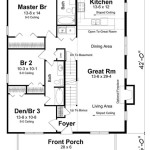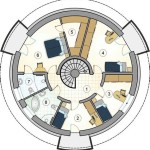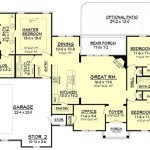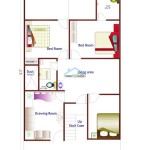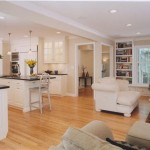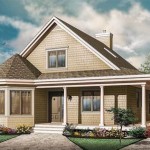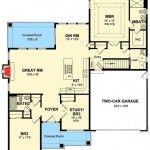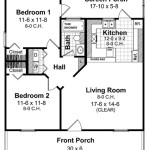600 Sq Foot House Plans: Maximizing Space and Functionality
The rising cost of land and construction materials, coupled with a growing desire for simpler, more sustainable living, has fueled a significant increase in the popularity of small house designs. Among these, the 600 sq foot house plan represents a particularly attractive option for individuals, couples, or small families seeking an affordable and manageable living space. These plans necessitate careful consideration of layout, storage, and multi-functional design to ensure comfortable and efficient inhabitation.
A 600 sq foot house footprint demands a strategic approach to spatial organization. It is not simply about shrinking a larger house plan; it’s about re-imagining the concept of home. Every square inch must serve a purpose, and the design should prioritize flexible spaces that can adapt to varying needs throughout the day and over time. Successfully executed 600 sq foot house plans balance aesthetics with practicality, resulting in dwellings that are both beautiful and highly functional.
When exploring 600 sq foot house plans, several design elements and considerations come into play. Understanding these elements allows prospective homeowners to make informed decisions and tailor plans to their specific needs and lifestyle. This article will delve into the key elements that define effective 600 sq foot house plans, highlighting crucial considerations for optimizing space utilization and enhancing livability.
Prioritizing Open Concept Living
One of the most common and effective strategies for maximizing the perceived and actual space within a 600 sq foot house is to embrace an open concept living area. This typically involves combining the living room, dining area, and kitchen into a single, flowing space. By eliminating interior walls, the house feels larger and more airy. This design minimizes visual clutter and facilitates better natural light distribution throughout the home.
Within an open concept layout, careful zoning is still critical. This can be achieved through various methods, such as strategically placed furniture, changes in flooring material, or the use of area rugs to define distinct activity zones. For instance, a kitchen island can not only provide additional counter space and storage but also serve as a visual barrier between the kitchen and the living area. Similarly, a different flooring material, such as tile in the kitchen and hardwood in the living area, can subtly delineate the space.
Furthermore, vertical space can be leveraged to enhance the open concept. High ceilings can create a sense of grandeur and allow for the inclusion of lofts for sleeping or storage. Built-in shelves and cabinets that extend to the ceiling also maximize storage capacity without occupying valuable floor space. The strategic use of lighting, including recessed lighting, pendant lights, and task lighting, further accentuates the different zones within the open concept area and contributes to the overall ambiance.
The open concept also facilitates social interaction. The absence of walls allows for easy communication and interaction between occupants, making it ideal for entertaining or spending quality time together. Careful consideration of furniture placement is essential to maintain a comfortable flow and prevent the space from feeling cramped or cluttered. Opting for multi-functional furniture pieces, such as sofa beds or expandable dining tables, can further enhance the versatility of the open concept living area.
Maximizing Storage Solutions
Efficient storage is paramount in a 600 sq foot house. Given the limited square footage, every opportunity to create storage space must be explored and utilized. This includes integrating storage into furniture, walls, and even the floor. The goal is to minimize clutter and keep living spaces organized, contributing to a more comfortable and livable environment.
Built-in storage is a particularly effective solution for small homes. Custom-designed cabinets, shelves, and drawers can be integrated into walls, under stairs, and even around windows. This maximizes available space and provides tailored storage solutions for specific needs. For example, a built-in entertainment center can house electronics, books, and other items while seamlessly blending into the wall. Similarly, a built-in pantry in the kitchen can provide ample storage for food and cooking supplies.
Utilizing vertical space is another crucial strategy for maximizing storage. Tall cabinets, shelves that reach the ceiling, and loft spaces can all provide additional storage without occupying valuable floor space. Wall-mounted shelves are particularly effective for storing books, decorative items, and everyday essentials. Loft spaces can be used for sleeping, storage, or even a home office, depending on their size and configuration.
Multi-functional furniture is another essential component of effective storage solutions in small homes. Sofa beds, ottomans with storage compartments, and coffee tables with hidden drawers can all provide additional storage space without sacrificing functionality. These pieces can be used to store bedding, blankets, books, and other items, helping to keep living spaces organized and clutter-free. Consider beds with drawers underneath to store off-season clothing or extra linens.
Beyond built-ins and multi-functional furniture, consider incorporating storage into often-overlooked areas. Space under the bed can be maximized with storage containers, and walls can be utilized with hooks and shelving. A small entry way can be enhanced with a wall-mounted organizer for keys, mail, and other essentials. The key is to think creatively and strategically to find every opportunity to incorporate storage into the design.
Prioritizing Natural Light and Ventilation
Adequate natural light and ventilation are crucial for creating a comfortable and healthy living environment in a small house. Maximizing natural light helps to make the space feel larger and more inviting, while proper ventilation ensures fresh air circulation and prevents moisture build-up. These elements contribute significantly to the overall well-being of the occupants and can impact the perceived size of the living space.
Large windows are the primary source of natural light. Strategic placement of windows can maximize sunlight penetration throughout the day. Consider the orientation of the house and the position of the sun when planning window placement. South-facing windows generally receive the most sunlight, while east-facing windows provide morning light and west-facing windows provide afternoon light. Skylights are also an excellent option for bringing natural light into areas that might not otherwise have access to windows.
In addition to large windows, light-colored walls and ceilings can help to reflect and distribute natural light throughout the house. This can make the space feel brighter and more airy. Mirrors can also be used strategically to reflect light and create the illusion of more space. Consider placing a large mirror on a wall opposite a window to maximize the reflective effect.
Proper ventilation is essential for maintaining air quality and preventing moisture build-up, which can lead to mold and mildew. Cross-ventilation, achieved by opening windows on opposite sides of the house, is an effective way to circulate fresh air. Ceiling fans and exhaust fans in the kitchen and bathroom can also help to improve ventilation. When selecting windows, opt for those that can be easily opened and closed to allow for controlled ventilation.
Landscaping can also play a role in maximizing natural light and ventilation. Avoid planting trees or shrubs that will block sunlight or obstruct airflow. Consider planting deciduous trees on the south side of the house to provide shade in the summer and allow sunlight to penetrate in the winter. Proper landscaping can also help to reduce noise pollution and improve the overall ambiance of the house.
Careful planning of window placement, light-colored surfaces, and ventilation systems will significantly enhance the livability of a 600 sq foot house. By prioritizing natural light and ventilation, the space feels more comfortable, inviting, and healthy.
In conclusion, designing a functional and comfortable 600 sq foot house requires a strategic approach that prioritizes open concept living, maximizes storage solutions, and optimizes natural light and ventilation. By carefully considering these key elements, prospective homeowners can create small but highly livable spaces that meet their needs and reflect their personal style.

Panther Plan 600 Sq Ft Cowboy Log Homes Cabin Floor Plans Small House One Bedroom

20 New 600 Sq Ft House Plans 2 Bedroom Image Floor Duplex Smart

600 Sq Ft House Plan Small Floor 1 Bed Bath 141 1140

600 Sq Ft House Plans 2 Bedroom N Style Home Designs 20x30 2bhk Plan Duplex

How Do Luxury Dream Home Designs Fit 600 Sq Foot House Plans

Tiny Home Plan Under 600 Square Feet 560019tcd Architectural Designs House Plans

600 Sq Ft House Plan Small Floor 1 Bed Bath 141 1140

30x20 House 1 Bedroom Bath 600 Sq Ft Floor Plan

600 Square Foot Tiny House Plan 69688am Architectural Designs Plans

600 Sqft House Plan Designs For 1bhk 2bhk Duplex Home

